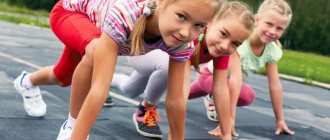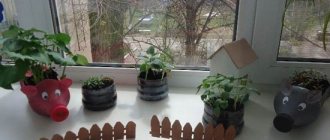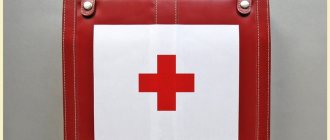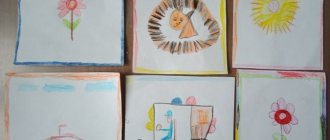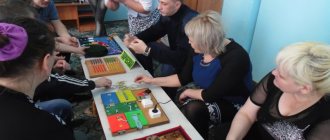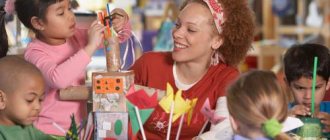“Helping Pig Firka” (lesson in the middle group on developing healthy lifestyle habits)
(The teacher begins to sneeze)Teacher: Oh, who is tickling me?
(Jonik appears on the screen)
- It’s me Jonik, son of the air. I came from the country of Etheria.
So that you wake up quickly, stretch, smile, I’ll sing to you now, listen to my song.
(Yonik sings a song).
Jonik invites children to sing along to the words from the song and perform movements. At the end of the performance, the children go to their places.
The teacher addresses Jonik:
— Jonik, what health secret do you want to tell the guys? What do you want to teach them?
Yonik: I am an air wizard, I can teach you how to breathe correctly.
The teacher addresses the children: Guys, don’t we know how to breathe?
Jonik agrees with the children: You can, but you need to know some rules to breathe better.
Rule 1: breathe through your nose
Rule 2 - do not raise your shoulders when inhaling
Rule 3 - the stomach should actively participate in breathing.
Teacher: Wait, wait Jonik, I didn’t remember anything, and you children? (Children remember the rules as much as possible)
“I will study with you,” says Yonik, “and you will remember everything and learn to breathe correctly.” But first, answer me the question: what is a nose for? (Breathe, sniff, blow your nose, sneeze)
The teacher addresses the children:
You noted everything correctly, now take a mirror and look carefully at your nose. (Children look, teacher comments). The air entering the nose passes through two corridors, the walls of which are covered with hairs, see?
Jonik asks children if they know what the hairs in the nasal passages are for? (hairs act as guards; they do not let dust particles and germs into the nose; when there is a lot of dust and germs, we sneeze and our nose becomes clear). (Children put the mirrors in place.)
Teacher : And now, I suggest you test your knowledge, together with the pig, help him understand our respiratory organs.
(Game presentation)
The teacher draws the children’s attention to the fact that when the air has passed through two corridors, been cleaned and warmed, it enters our lungs (a picture depicting the human respiratory organs is hung), the teacher talks about how when we inhale the lungs expand, and when we exhale - taper, so they look like a balloon. (The teacher demonstrates the experience with balloons, commenting and associating them with lungs).
Breathing exercises.
Jonik praises the guys and invites them to do breathing exercises to learn how to breathe through their noses correctly. The teacher explains the task:
-You need to stand in pairs. Hold hands and look into each other's eyes and smile.
Exercise 1 – “The ball inflated and burst”: put your hands on your stomach, inhale, feeling that your stomach is inflating like a ball, and say “sh-sh-sh” as you exhale.
Exercise 2 – “Beetles”: stand with your backs facing each other, put one hand on your chest, the other on your stomach. While exhaling for a long time, pronounce the sound “zh”.
Exercise 3 – “Frog Singing”: turn to face each other, put your hands on your stomach, while exhaling, actively work with your diaphragm, pronounce the sound “kwa”.
— Well done, guys, they did everything correctly, followed all the rules.
You breathed, you inhaled through your nose, you didn’t lift your shoulders, and your tummy breathed - it saved your health.
The teacher asks a problematic question: “How do you know that mom is baking buns in the kitchen if you are in another room? Who will help you with this?
(Nose, we will feel what it smells like).
You guys correctly said that we need a nose not only to breathe, but also to smell. This is especially important for animals in the forest, since the smell can be a signal of danger or food that cannot be avoided. Want to try hunting?
Game "Hunting". (Children are divided into two teams. Children with dark hair are looking for cups with the smell of orange. Children with blond hair are looking for cups with the smell of pine).
Firka: Why don’t I feel anything? I sniff and sniff and nothing.
The teacher suggests that Fyrka has a cold and his nose is not breathing, turns to the children with the question: “Can they help Fyrka with advice on how to recover from a cold? (Warm your feet, drink hot tea, put medicine in your nose, take a pill)
Teacher : This is all correct, but now we won’t be able to do it all. Is there any remedy that will help right now? (Massage)
Massage.
The teacher suggests doing it together with the children.
Show me the snail massage and tell me how to do it?
From the porch to the gate, the snails crawled for three hours. The girlfriends crawled for three hours, dragging the huts on themselves.
(Rub your index fingers, massaging the bridge of your nose from top to bottom and bottom to top 10-15 times).
Firka: Hurray! My nose started breathing! I can smell it! And my mood has improved, I want to run, play, have fun!
Teacher: It turns out that was the reason for your bad mood. Well, then, now I suggest you play with the sand.
Sand games.
On a flat surface of slightly damp sand, a child and an adult take turns making handprints: with the inside and outside. In this case, it is important to hold your hand a little, lightly pressing it into the sand, and listen to your feelings. Repeat after the teacher, make handprints.
The adult begins the game by telling the child about his feelings: “I’m pleased. I feel the coolness (or warmth) of the sand. When I move my hands, small grains of sand slide across my palms. How do you feel?
When children have received a sample of verbal descriptions of their feelings, they will try to talk about what they feel themselves.
The teacher turns his hands over, palms up, with the words: “I turned my hands over, and my sensations changed. Now I feel the roughness of the sand differently, in my opinion, it has become a little colder. How do you feel? It's not very comfortable for me to hold my hands like this. And you?" Children talk.
Discuss possible further actions aimed at changing the sensations. Maybe move your arms? Try: slide your palms along the surface of the sand, performing zigzag and circular movements (like a machine, a snake); “walk” with your palms along the paved routes, leaving your traces on them; create all sorts of bizarre patterns on the surface of the sand using the prints of palms, fists, and knuckles and try to find the similarity of the resulting patterns with any objects in the surrounding world (daisy, sun, drop of rain, blade of grass, tree, hedgehog, etc.) Children repeat the movements with their hands teacher
